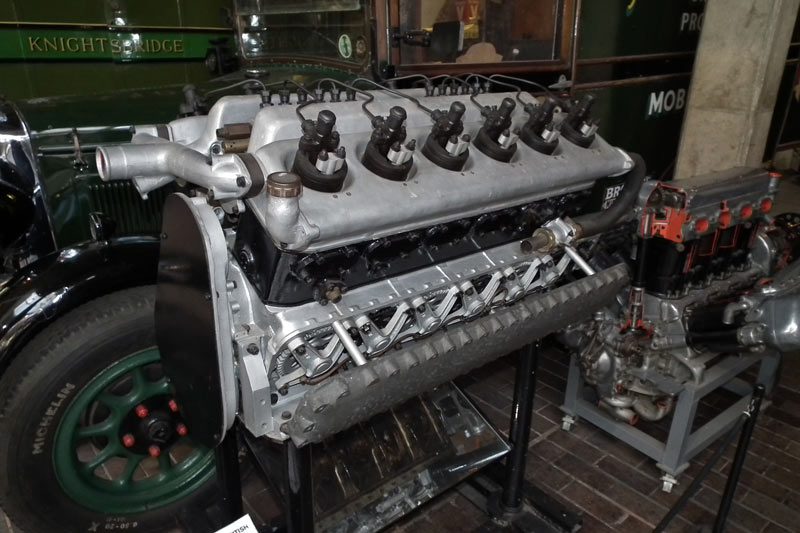Leading Tips for Inspecting Used Engines for Sale Prior To Purchasing
Leading Tips for Inspecting Used Engines for Sale Prior To Purchasing
Blog Article
Vital Considerations for Ensuring Quality and Durability in Made Use Of Engines
When considering the purchase of an utilized engine, guaranteeing its top quality and longevity requires a multifaceted technique. Upkeep history is an essential variable, as it gives understanding into the engine's previous treatment and prospective future dependability. Beyond paperwork, an in-depth assessment of physical parts-- such as belts, tubes, and seals-- can reveal hidden problems. Efficiency testing is likewise vital, offering a picture of the engine's operational efficiency. Understanding the subtleties of these analyses and their effects can be complicated. What are the essential strategies that can be used to browse this complex analysis procedure efficiently?
Engine History Analysis
In the world of used engines, an extensive engine history examination is critical to ensuring top quality and dependability. Understanding an engine's past can give vital insights into its performance capacities and prospective future long life. A thorough background evaluation encompasses numerous key facets that play a considerable role in analyzing an engine's problem. First of all, upkeep records are crucial. Routine upkeep, consisting of oil changes, filter replacements, and scheduled tune-ups, suggest that the engine has been well-cared-for, reducing the likelihood of unpredicted failures.
Engines that have undergone substantial repair services may have underlying concerns that might resurface. Analyzing the engine's mileage can offer as a sign of wear and tear. An engine used mostly for long-distance highway driving may be in much better problem than one subjected to frequent stop-and-go city website traffic.
Fundamentally, an exhaustive investigation into an engine's background is necessary for making educated buying decisions. used engines for sale.
Comprehensive Examination Guide
While recognizing an engine's background offers useful context, a detailed evaluation is the next action to ensure its present problem lines up with historic data. The evaluation needs to begin with an aesthetic assessment, inspecting for indicators of leaks, corrosion, and uncommon wear. Check the outside for oil stains or coolant marks, which may show underlying problems.
Next, assess the engine's installing system for any kind of loose bolts or irregularities that might influence efficiency. Pay very close attention to the condition of belts and pipes, as these parts are important for optimal engine functionality. Examine for fractures, fraying, or any kind of indicators of wear and tear.

Determining Deterioration
Acknowledging signs of wear and tear is crucial for examining an utilized engine's durability and reliability. It entails a careful evaluation of different engine elements to establish their present state and potential future efficiency. Typical indications consist of visible rust, which can impact steel parts and endanger architectural stability. Rust on or around the engine block, cyndrical tube heads, and exhaust manifolds is specifically concerning.
One more essential facet is inspecting the engine's seals and gaskets. Additionally, abnormal sounds throughout engine operation, such as knocking or ticking noises, might show inner damage or extreme wear on moving components like pistons or bearings.
The problem of belts and tubes is just as essential, as they play a crucial duty in the engine's general function. Broken or frayed belts and breakable tubes are indicators old that might lead to engine failing if ignored. Lastly, examining the oil problem and filter can supply understandings right into previous upkeep practices, as unclean oil or clogged filters recommend overlook and accelerated wear.
Performance Screening Fundamentals
Reviewing the wear and tear of engine parts establishes the phase for a thorough evaluation through efficiency screening. Performance screening serves as a critical action in identifying the functional integrity of a made use of engine.
Utilizing dynamometers is a typical approach in performance screening. These devices determine the engine's result across numerous conditions, using a detailed account of its functionality. In addition, on-road screening matches dynamometer assessments by observing engine behavior under regular driving situations, guaranteeing it satisfies the needed criteria for both security and efficiency.
These tools examine engine monitoring systems, recognizing mistakes in digital parts that could affect efficiency. Comprehensive screening not just validates the engine's functional condition however also help in projecting future upkeep requirements.
Upkeep and Treatment Tips
Appropriate maintenance and treatment are essential to prolonging the lifespan of a used engine and guaranteeing its Full Article regular efficiency. Routine oil modifications are critical; utilizing the maker's suggested oil type and grade can protect against too much see here deterioration. Furthermore, oil filters should be replaced simultaneously to preserve ideal lubrication and tidiness within the engine.
Keeping an eye on fluid levels, consisting of coolant, transmission liquid, and brake fluid, is vital. Making sure these liquids go to proper degrees aids protect against getting too hot and various other mechanical problems. Inspecting belts and hoses for signs of wear, such as splits or fraying, can avoid potential failings that might bring about pricey repair services.
Regular inspection of the air filter is also essential, as a tidy filter makes certain efficient air movement and burning, therefore enhancing engine efficiency. Ignition system must be checked and changed when needed to preserve efficient fuel burning and stop engine misfires.
Last but not least, regular analysis checks making use of professional devices can identify prospective concerns prior to they become considerable troubles. By sticking to these maintenance and care pointers, used engine owners can ensure their engines continue to be reliable, effective, and efficient in performing more than an extensive duration.
Conclusion

Report this page